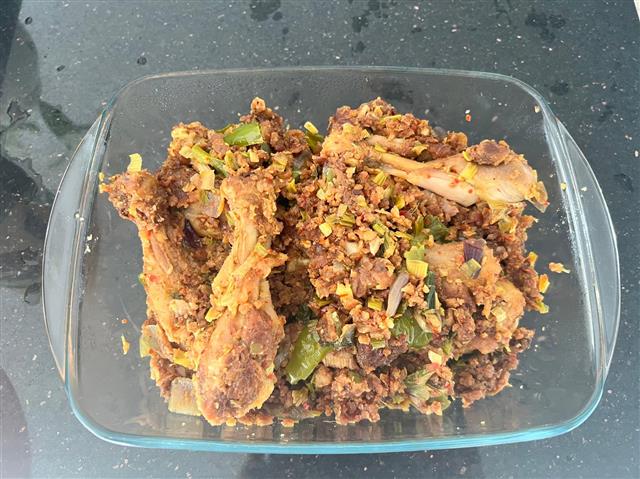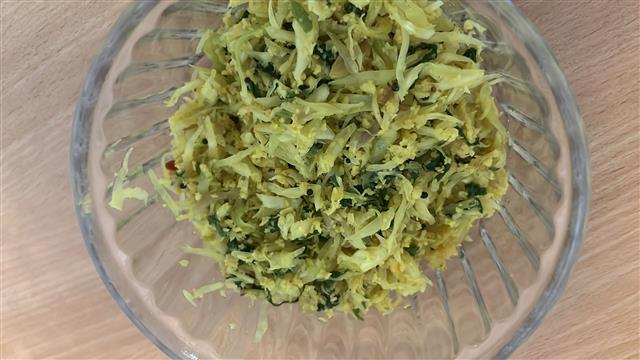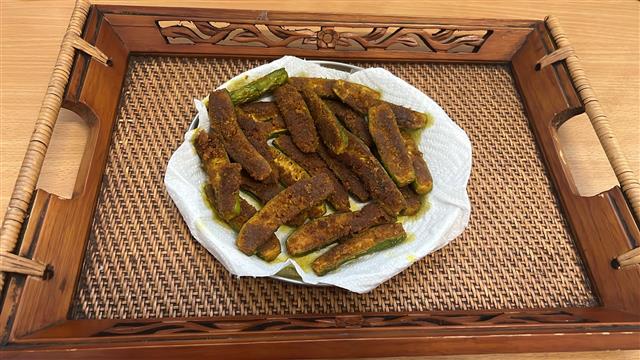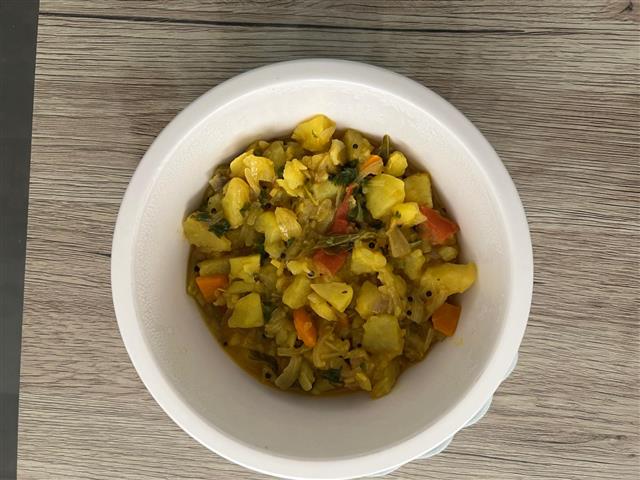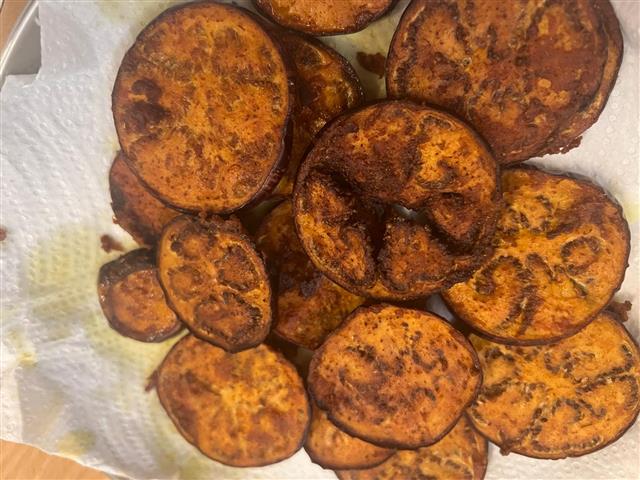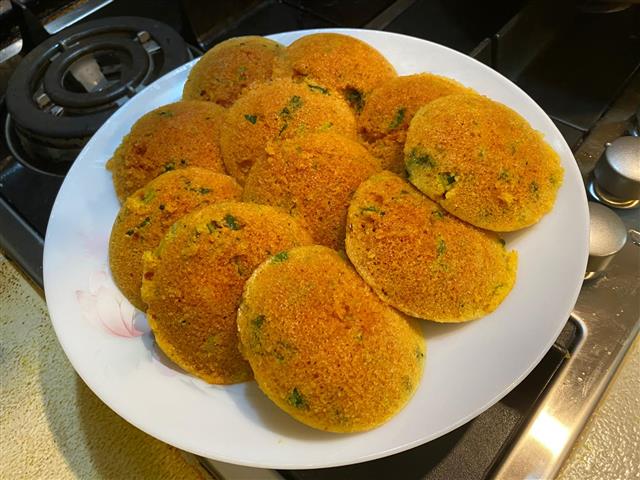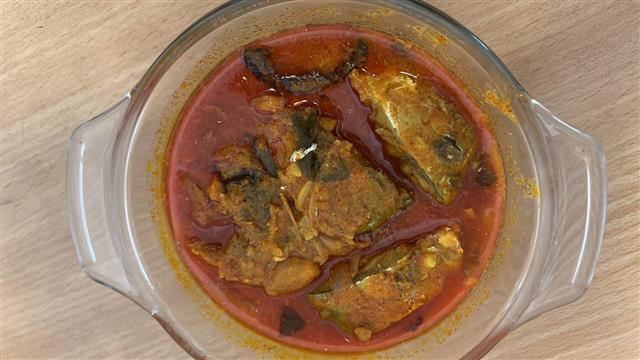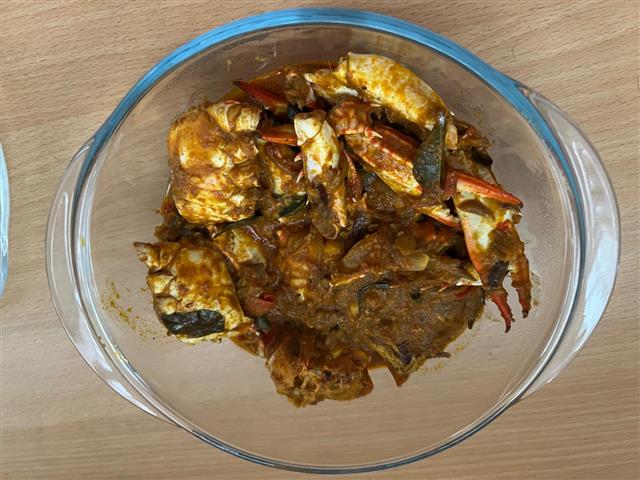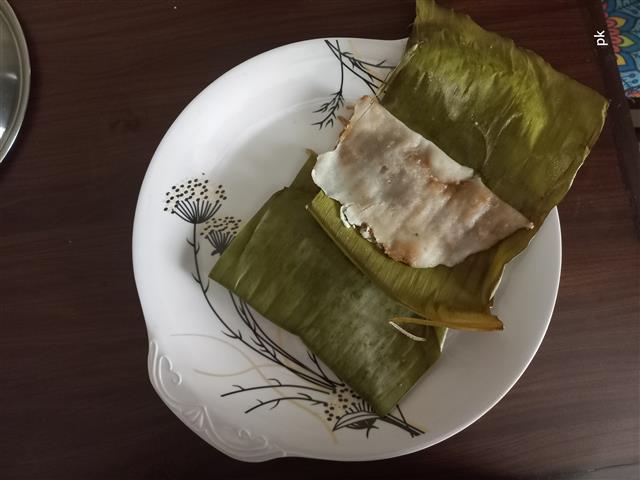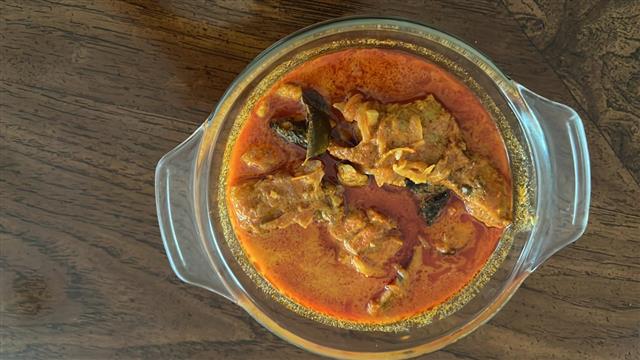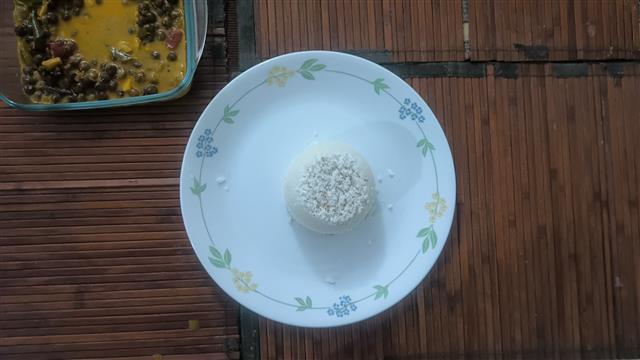
Cherupayar Thoran
(4 reviews)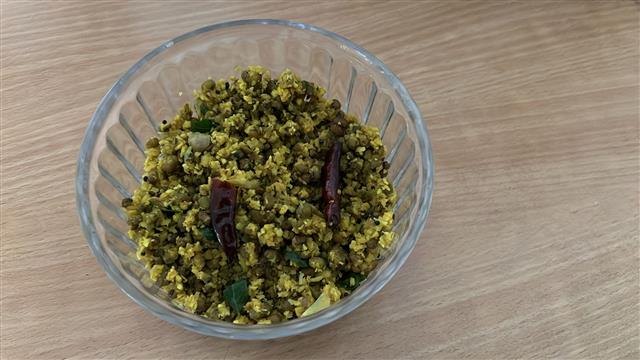
Cherupayar Thoran is a traditional Kerala-style stir-fry. Green gram (mung beans) is cooked with fresh coconut, and a tempering of mustard seeds, curry leaves, and shallots is added.
It is a comforting side dish that pairs beautifully with steamed rice and a dollop of ghee or a spicy curry.
A simple to make dish, this thoran is a staple in many households. Nutritious and tasty with every crunchy bite,
Ingredients
Directions
- Prepare the tempering: Heat coconut oil in a pan. Add mustard seeds and cumin seeds. Once they splutter, add curry leaves, chopped garlic, shallots, and green chillies. Sauté until the shallots turn golden brown.
- In a saucepan, add soaked green gram, water, and a pinch of turmeric. Cook until the green gram is tender but not mushy. Drain any excess water.
- Add the grated coconut: Stir in the grated coconut and sauté for a couple of minutes until well combined with the tempering.
- Add the cooked green gram to the pan. Mix well and cook for 5-10 minutes on low heat to blend the flavours. Adjust salt as needed.
- Serve the Cherupayar Thoran hot with rice.
Cooking Tips
• Don't overcook the green gram: It should be tender to touch but retain its shape. Overcooking it can make the dish mushy.
• Use fresh coconut: Frozen coconut can work, but nothing beats fresh. The flavour and texture of fresh coconut elevate the dish.
• Adjust chilli to taste: For a spicier version, add one full green chilli or use a pinch of crushed red chilli instead.
• Coconut oil is key: It imparts the signature Kerala touch. Don't substitute with other oils if you're seeking an authentic taste.
• Dry roast optional: Some like to dry roast the Whole green moong slightly before cooking. This provides a nutty flavour.
How to Serve
• Pair with hot rice or chapati
• Alongside curry, sambar, or rasam.
• With kanji (rice gruel) for a light and wholesome meal.
The Story Behind Cherupayar Thoran
This dish has deep roots in Kerala's farming history. Green gram, a native pulse, was commonly grown in home gardens and fields. As it is easy to cook, affordable, and packed with nutrition, it became a regular feature on the lunch table. Traditionally, Cherupayar Thoran was a go-to dish on religious fasting days. It was served in temples or at homes during fasting rituals, as it's considered to be both Satvik and nourishing food.
Grandmothers often made it in earthen pots, using freshly grated coconut scraped just minutes before cooking. Its simplicity is its soul. **Cherupayar Thoran ** is not just a dish. It evokes the image of a quiet afternoon meal in a thatched home laid out on a banana leaf.
Historically, cherupayar was an accessible and widely used legume in Kerala households. Farmers cultivated it easily during the **Karkidakam ** (monsoon season) when heavy rains meant less rice in the granary. Green moong is light on the stomach, affordable, and nourishing, making it the ideal food during monsoons or for those recovering from illnesses.
In many homes, Cherupayar Thoran was served alongside kanji (rice gruel) as a comforting meal. In some temples, satvik versions of this dish were offered during prasadam on festival days, especially when only non-onion and garlic dishes were allowed. This thoran also features in Onam Sadya spreads, particularly in the central and southern districts of Kerala.
What is Cherupayar Thoran?
Cherupayar Thoran is a dry vegetable stir-fry made with green gram (moong beans) and grated coconut. It's flavoured with a gentle tempering of Kerala spices.
"Thoran" refers to side dishes in Kerala cuisine where vegetables or legumes are sautéed with coconut, curry leaves, mustard seeds, and sometimes cumin or garlic. It is an essential part of the Kerala vegetarian platter in everyday meals. it makes for lunch box or a quick weekend vegetable dish to serve with rice or chapati .
Regional Differences Though the core ingredients of this thoran remain consistent across Kerala, subtle regional variations reflect the state's culinary diversity.
Northern Kerala (Malabar region): Often omits garlic and cumin and instead uses a coarser coconut mix. Some households may add crushed black pepper and use red chillies in place of green ones.
Central Kerala: This region's version is closest to the standard recipe. Home cooks here use shallots, green chilies, garlic, and fresh coconut tempered in coconut oil.
Southern Kerala: A spicier version is made with an extra green chilli or even a dash of red chili flakes. This region may also incorporate a touch of crushed ginger along with garlic for additional depth.
Fasting-style: The dish is made without onion and garlic. The seasoning is light, and often includes mustard, curry leaves, coconut, and green chilli. This is perfect to keep it pure for ritualistic cooking.
(For more Thoran recipe ideas, use the search box on the sidebar or scroll down the home page)
Pro Tips for Perfect Results
→ Toast the coconut on a low flame for a couple of minutes to enhance its sweetness without drying it out.
→ Use Chuvannulli (Kerala small onions) for an authentic taste. Besides, they caramelise well.
→ Short on time? Use split moong dal (without skin). It cooks faster but has a slightly different texture.
→ If using a pressure cooker, 2 or 3 whistles are enough.
Cherupayar Thoran Variations
- With crushed pepper:
For extra warmth, add a pinch of crushed black pepper.
- With chopped greens:
Add chopped cheera (amaranth), spinach, or even moringa leaves (drumstick leaves) for added nutrition. Add towards the end of cooking.
- No Onion:
For fasting or Satvik meals, omit shallots and garlic.
- With Red Chilli:
Substitute green chilli with dried red chillies for a different heat profile.
- With Coconut Paste:
Instead of dry grated coconut, use a coarsely ground paste of coconut, green chilli, and cumin for a richer dish.
Storing & Reheating Tips
→ Storage: Store leftovers in an airtight container for up to 2 days.
→ Reheat: Gently heat on the stovetop or in the microwave for 1 minute.
→ Freeze: Not ideal, as the coconut can change texture when thawed.
Common Mistakes to Avoid
→ Overcooking the cherupayar – It turns mushy and ruins the texture of the thoran.
→ Using too much water – Drain excess water thoroughly.
→ Not tempering the spices – The flavour depends heavily on the tempering process.
→ Skipping coconut oil – This alters the taste and you don't get the Kerala touch to the dish.
Frequently Asked Questions
- Can I use sprouted green gram for this recipe?
Yes, sprouted cherupayar can be used. It will cook faster and is more nutritious.
- What if I don't have fresh coconut?
You can use frozen coconut (thawed) or desiccated coconut soaked in a little warm water, though fresh is best.
- Is it okay to pressure cook the green gram?
Yes, but just 2 to 3 whistles on medium flame. Overcooking can make it mushy.
- Can I skip cumin seeds?
You can, but they add a warm earthiness that complements the green gram. Use fennel or caraway seeds instead.
Equipment Needed
→ Thick-bottomed kadai or pan
→ Saucepan for boiling green gram
→ Ladle or spatula
→ Strainer to drain the cooked green gram
→ Chopping board and knife
